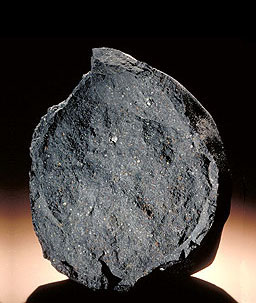The Archean Eon (4 to 2.5 billion years ago)
During the Archean Eon, methane droplets in the air shrouded the young Earth in a global haze. There was no oxygen gas on Earth. Oxygen was only in compounds such as water. Complex chemical reactions in the young oceans transformed carbon-containing molecules into simple, living cells that did not need oxygen to live. Instead they made energy out of sulfur and other elements.
2.7 billion years ago, bluish-green microscopic organisms called cyanobacteria flourished in Earth’s oceans. They made gaseous, or free, oxygen from carbon dioxide, water, and sunlight—the process called photosynthesis. As cyanobacteria created more free oxygen, the amount of oxygen in the atmosphere reached one percent of today’s level, which is 21 percent.
Forecast: Paradox
Three billion years ago, the sun was only about 70 percent as bright as it is today. Earth should have frozen over, but it didn’t. Why not? Because greenhouse gases in the atmosphere, mainly methane and carbon dioxide, trapped enough of the sun’s heat to keep temperatures above freezing.

- Extraterrestrial
- This meteorite fragment landed in Murchison, Australia, in 1969. It contained many amino acids, organic compounds that are the building blocks of proteins. Similar organic compounds in meteorites that fell to Earth when it was young may have given a jumpstart to life.
- Photo Chip Clark © Smithsonian Institution
